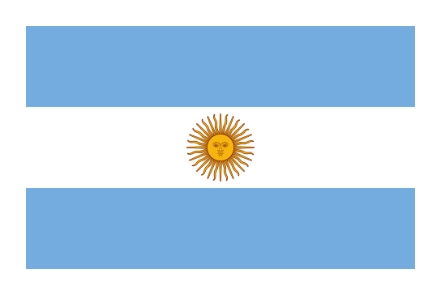Jon Forsse - Sequela of hydrocephalus (Argentina) Posted on October 17, 2014
 Name: Jon Forsse
Name: Jon Forsse
Sex: Male
Country: Argentina
Age: 11 years
Diagnoses: 1.Sequela of hydrocephalus, Optic atrophy and Secondary epilepsy 2. Upper respiratory tract infection
Date: September 08, 2014
Days Admitted to Hospital: 20 days
Before treatment:
The patient was born full term. The patient suffered from convulsion of whole body second day after birth. The epilepsy was considered. After further examination showed the patient had hydrocephalus. He received Hydrocephalus bypass. The patient suffered from intracranial infection and received active treatment for the infection. He also received sodium valproate. The patient’s condition improved and he was discharged. But he still had epileptic seizure sometimes. Then the patient suffered from delay in motor and intelligence. His walk was unstable. The memory and computation power were poor. The patient suffered from vision decline 4 years and changed ventricular shunt. The patient only had light sensation and could see objects outline sometimes. The walking gait was abnormal. The calculation power was poor. He had response when he was called.
From the onset of disease, the patient had normal spirit. The diet and the sleep were normal. The defecation and urine were normal.
Admission PE:
Bp: 111/72mmHg; Br: 19/min, Hr: 100/min. Height: 136cm, weight: 44Kg. The development and nutrition were good. The skin and mucosa were normal, with no yellow stains or petechia. There was multiple surgical scars in the abdomen and chest, clavicular area. The thorax was symmetrical. The respiratory sounds in both lungs were clear with no signs of dry or moist rales. The heart sound was strong and the heart rhythm was regular. There was no obvious murmur in the auscultatory valve areas. The abdomen was enlarged and soft, with no masses found. The liver and spleen were not enlarged.
Nervous System Examination:
The patient was alert and his speech was clear. The examination of memory, calculation, comprehension and orientation were normal. Both pupils were equal in size, the diameter was 3.0mms. Both pupils reacted normally to light stimulus. Only the left eye had light sensation, but had no vision or visual field. The color recognition ability of left eye was poor. Both eyeballs could move freely. The convergence ability of left eye was poor. There was a thick horizontal nystagmus in both eyes. Under ophthalmoscope: right fundus was presented with dark red color. This accompanied with yellow exudation. The optic nerve head had edema and the border of optic nerve head was unclear. The border of macular area in both eyes was unclear. There was ouloid changer in retina. The arteriovenous ratio was normal. Left fundus nasal 1/4 was presented with light yellow, other part presented with dark red color. This accompanied with dark black sediment. The border of optic nerve head and macular area were unclear. The arteriovenous ratio was normal. The forehead wrinkle pattern was symmetrical, the nasolabial sulcus was equal in depth. The swallow ability was normal. The hearing ability was normal. The movement of neck was normal. The muscle strength of both upper limbs' flexor was at level 5. The hold power of both hands was at level 5. The muscle strength of both lower limbs was at level 4+. The muscle tone of four limbs was normal. The muscle strength to lift leg was poor when he walked. The walking gait was abnormal. The balance ability was poor. The tendon reflex of four limbs was normal. The abdominal reflexes were normal. The sucking reflex was negative. Bilateral palm jaw reflex was negative. Bilateral Hoffmann sign was negative, bilateral Rossolimo sign was negative. Bilateral Babinski sign was positive. The examination of deep, shallow sensation and coordinate movement were normal. There was no meningeal irritation sign.
Treatment:
The patient suffered from cough, nasal congestion, runny nose and pharyngalgia at the time of admission. All the symptoms were conform to upper respiratory infection symptoms. According to other examinations and the medical history, he was diagnosed with Sequela of hydrocephalus, Optic atrophy and Secondary epilepsy 2. Upper respiratory tract infection clearly. Jon Forsse received antibiotics therapy. The patient received treatment for nerve regeneration and to activate stem cells in vivo. He received treatment to improve the blood circulation, nourishment for the neurons and expand blood vessels. He also received treatment to enhance his immunity. This was accompanied with rehabilitation training.
Post-treatment:
The patient's vital signs have been leveling off. The left vision and color recognition has some restoration. The muscle strength of his four limbs is normal. The balance ability is better than before. The walking posture and walking gait are better than before.
Email:
Date: 2014-11-12
Hola dr disculpa por las demoras, queria contarle q agus esta mejor fisicamente y que ademas de ver colores hace unos dias logro ver figuras... gracias
KARINA
Date: 2014-11-13
Estimado Jin:
Soy la madre de Jon Forsse de Argentina. Queremos hacerle unas consultas a los doctores y recurrimos a usted porque tememos que parte de la información se pierda en la traducción.
Jon Forsse esta expuesto largas horas frente a la pantalla de la computadora y tableta. Ademas esta por comenzar con una estimulacion visual en la cual también harán uso de estos dispositivos.
Nuestra duda es si esto puede afectar de alguna manera a las células madres o si debemos protegerlo de algún tipo de luz en especial?
Desde ya estamos muy agradecidos si puede ayudarnos con esta duda.
Saludos ...
